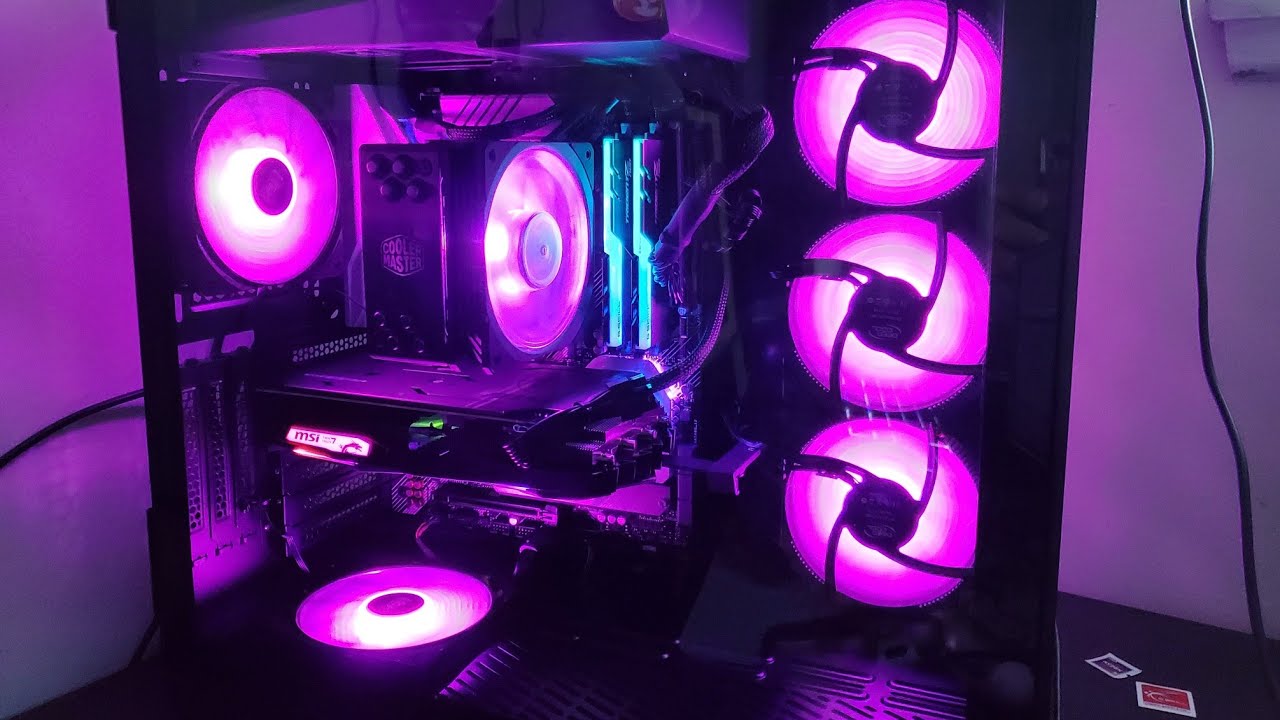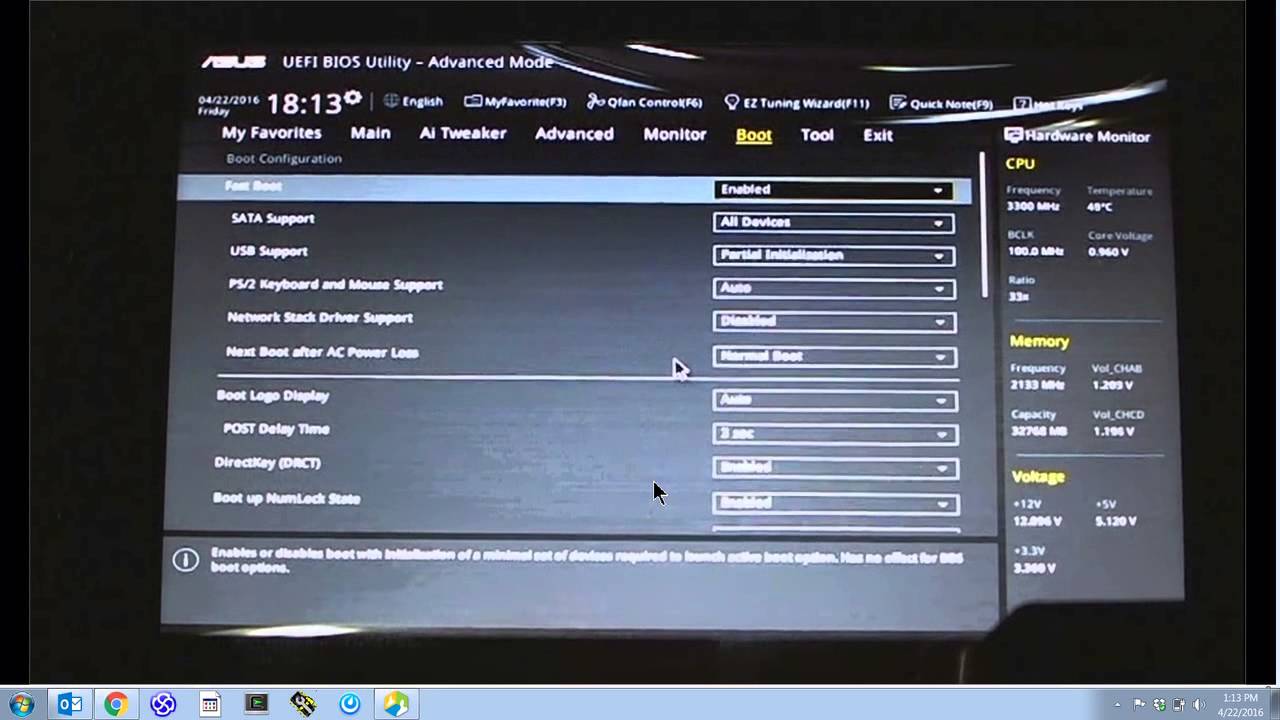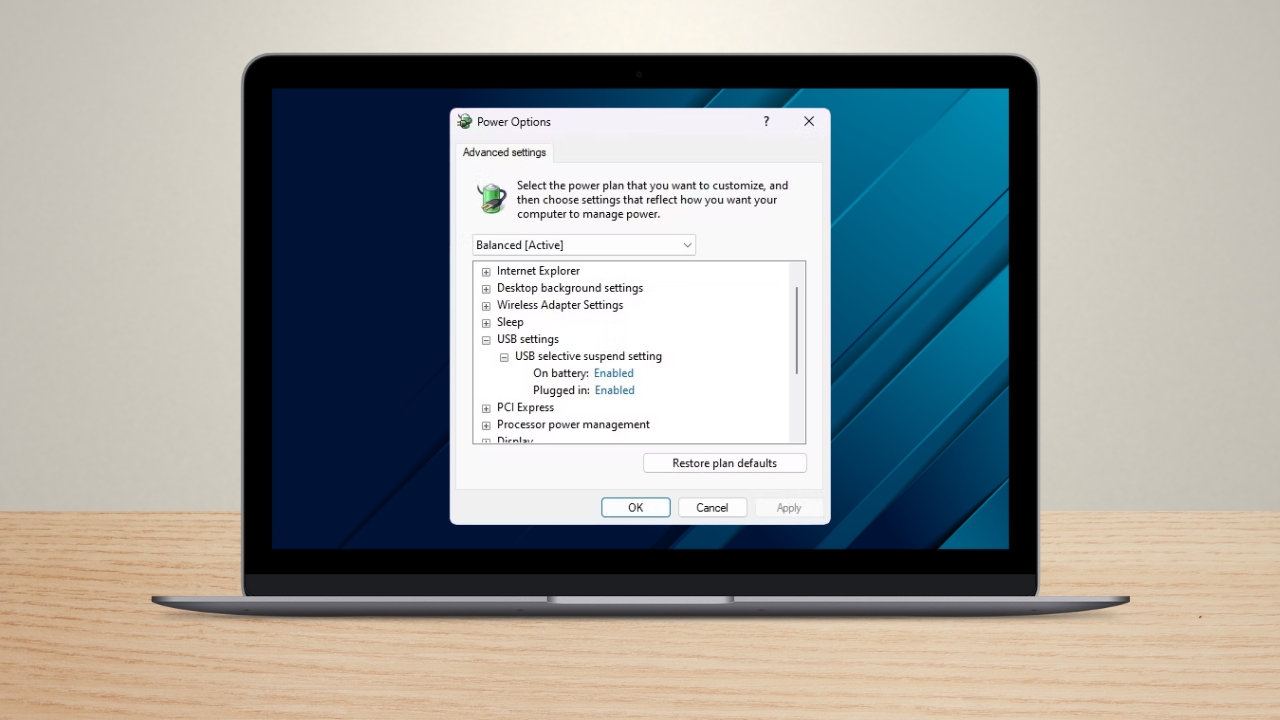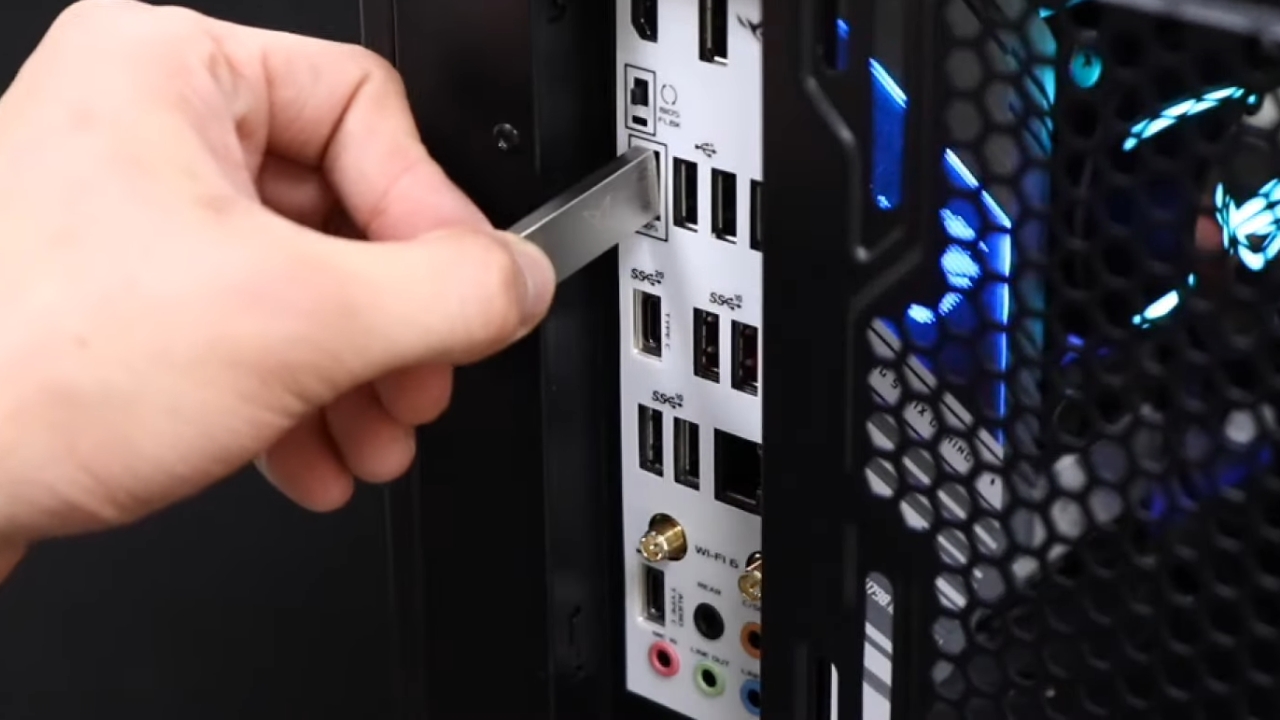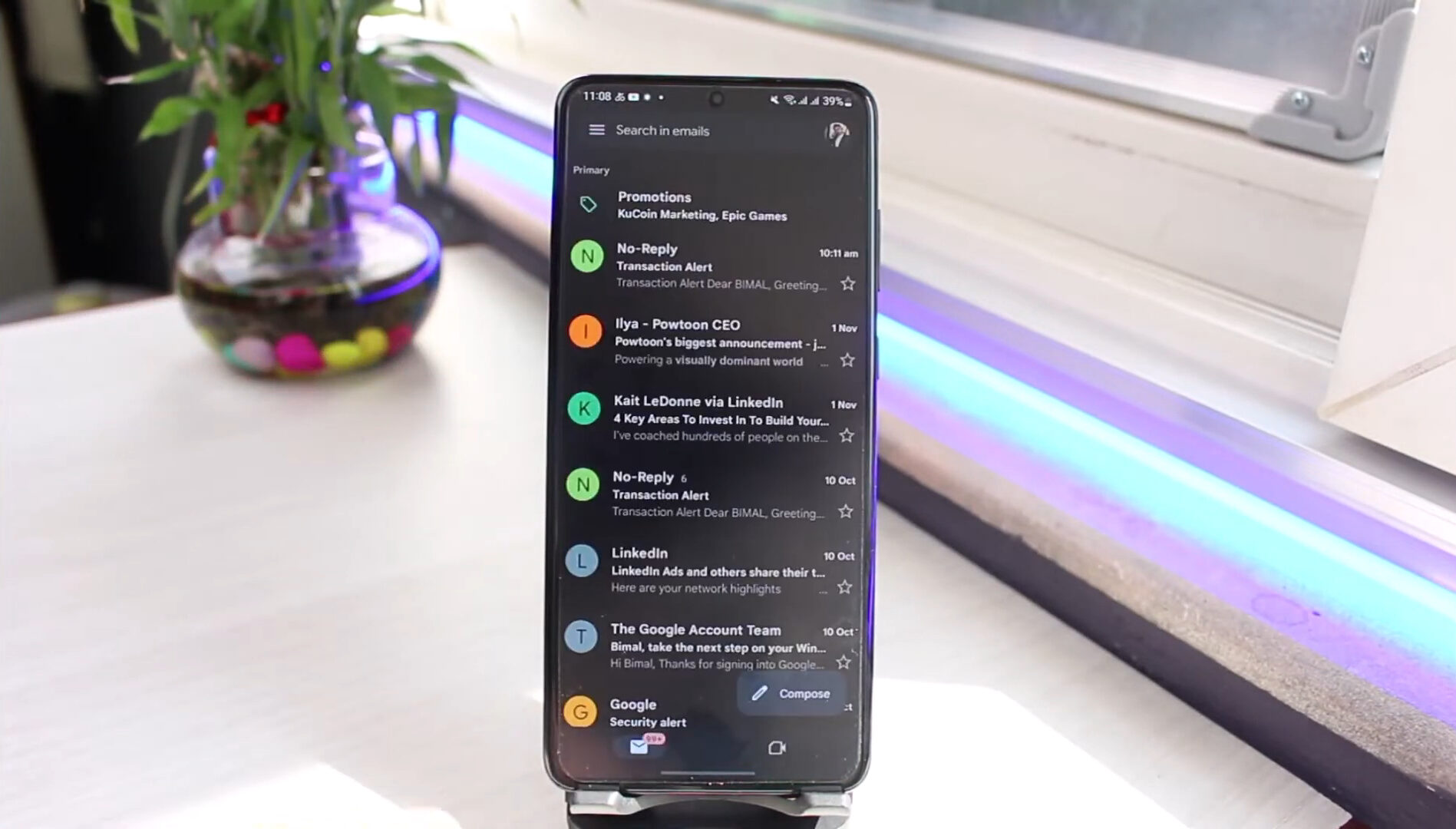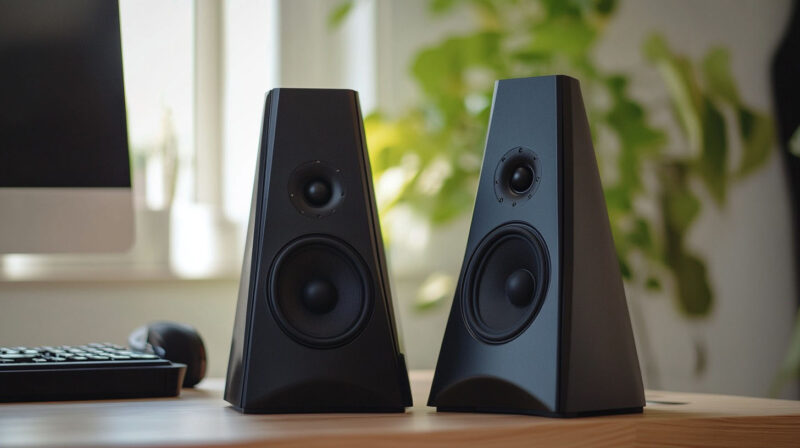
Share Post:
Connecting external speakers to a monitor can significantly enhance your audio experience, whether you’re watching movies, playing games, or participating in virtual meetings.
Sometimes people are unsure of how to conduct this.
To make your future efforts easier, we’ll cover the most effective ways to achieve superior sound quality directly from your monitor.
1. Using a 3.5mm Audio Jack

Connecting external speakers to a monitor using a 3.5mm audio jack is an efficient and popular method, favored for its simplicity and reliability.
- Begin by locating the audio output port on your monitor. This is typically marked with a headphone icon or may be labeled as “Audio Out”.
- Take a standard 3.5mm audio cable, which is commonly found in most electronic stores or comes included with many speaker systems. Insert one end of the cable into the monitor’s audio output port. Then, connect the other end to the input port on your speakers.
- Check both connections on the monitor and the speakers to ensure they are not only tight but also correctly plugged in.
- After ensuring all connections are secure, turn on your monitor and speakers. Play a sound file, a video, or a music track to test the audio output.
- Finally, adjust the volume settings on both your monitor and your speakers.
2. Connecting via HDMI ARC (Audio Return Channel)
HDMI ARC (Audio Return Channel) revolutionizes the way audio is handled within home entertainment systems by enabling both video and audio signals to travel through a single HDMI cable.
- Before attempting to use HDMI ARC, it’s essential to confirm that both your monitor and your speakers or sound system support HDMI ARC functionality.
- Use an HDMI cable that supports ARC; these are typically marked but are generally the same as any high-speed HDMI cable. Connect one end to the HDMI ARC port on your monitor and the other end to the ARC port on your sound system or speakers.
- Once everything is physically connected, power on your devices and navigate to the audio settings on your monitor.
- Testing is a vital step to ensure that everything is set up correctly. Play a video or audio track that will pass sound through the HDMI connection.
3. Utilizing USB Speakers

USB speakers offer a sleek and straightforward option for enhancing audio directly from your monitor, making them an ideal choice for modern, digital-first environments.
It is a method leverages the digital signal transmission capabilities of USB, ensuring clean and consistent sound quality without the analog interference sometimes associated with traditional audio connections.
- Before you begin, it’s crucial to confirm that your monitor supports audio output via USB.
- If your monitor supports audio through USB, take the USB cable that either comes with your speakers or is provided separately and plug it into a free USB port on your monitor. Ensure the connection is secure to avoid any disruptions in sound transfer.
- After the physical connection is made, you will need to configure your monitor to send audio to the USB speakers. This generally involves navigating to the sound settings through the monitor’s on-screen menu. Here, you’ll likely need to set the USB speakers as the default audio output device.
- To ensure that your setup is working correctly, play audio from your computer or online to test the speakers. Listen for clarity and volume, and adjust settings as needed.
4. Wireless Bluetooth Speakers

Wireless Bluetooth speakers offer an excellent solution for users looking to reduce cable clutter and enhance their audio setup with mobility and ease.
- The first step in setting up your wireless speakers is to ensure both your monitor and the speakers have Bluetooth capabilities and are compatible with each other. This usually means they should support the same Bluetooth version, such as Bluetooth 4.0 or newer.
- Turn on your Bluetooth speakers and put them into pairing mode. The mode is typically activated by pressing and holding a specific button on the speakers, indicated either by a blinking light or a sound cue.
- On your monitor, navigate to the Bluetooth settings through its menu system. Once in the Bluetooth menu, scan for devices and select your speakers from the list of available Bluetooth devices.
- Successful pairing is usually indicated by a confirmation message on the monitor’s display or an auditory signal from the speakers. Some devices also show a steady light on the speakers to indicate a successful connection.
- With the speakers connected, play various types of audio content to test the connection’s stability and sound quality. Listen for any latency issues, distortions, or interruptions in sound. Bluetooth connections can sometimes introduce a slight delay, so it’s important to check if the sync between visual and audio outputs is satisfactory, especially when watching videos or playing games.
5. Using External Audio Interfaces

External audio interfaces are a critical component for those who demand professional-grade sound quality, particularly in environments like music production studios, broadcasting setups, or any space where detailed audio editing is required.
These devices act as the bridge between your computer or monitor and your high-quality speakers, providing a far superior sound output than standard audio outputs on most monitors.
- Start by unboxing the audio interface and reading through the manufacturer’s instructions carefully. It’s crucial to understand how to properly connect and operate your specific model. Position the interface in a stable, accessible location near your monitor.
- Depending on the capabilities of your audio interface and monitor, connect them using the most suitable method. Ensure that the connection is secure to maintain the integrity of the audio signal.
- Utilize the appropriate cables to connect your speakers to the audio interface.
- Power on your audio interface and install any necessary drivers on your computer. Most interfaces come with software that allows you to adjust settings like input levels, output levels, and sometimes equalization and other effects.
- Ensure that the audio from your monitor or computer is being routed through the audio interface to your speakers.
- Play a variety of audio tracks to test the entire setup. Listen for clarity, volume, balance, and any potential interference. Adjust the levels and settings both on your interface’s software and on the physical interface itself, if applicable, to fine-tune the sound to your exact preferences.
The Bottom Line
We’ve explored various methods to connect external speakers to a monitor, each suited to different user preferences and technical setups.
Remember, the correct settings and proper speaker placement are crucial for achieving the best audio performance from your setup.


